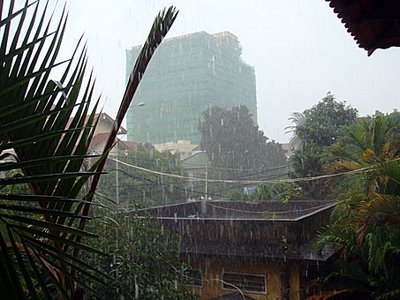135 and counting
As the number of deaths in Cambodia from lightning strikes reaches an unprecedented level of 135 so far this year, the government have at last decided to introduce an awareness campaign using banners to warn the population of the dangers. I presume they mean the ones that are strung across the road and usually welcome visiting heads of state. Why such a campaign wasn't initiated months ago is beyond me. There were 95 deaths last year, surely that should've prompted some reaction from the authorities for starters. Lightning strikes usually occur during the monsoon rainy season, which came early this year, and we're already fast approaching the end of that period. Erecting banners is a start but much more needs to be done to educate everyone, in schools and at village and commune level, on television and radio, in newspapers, everywhere really. My previous post here gives a few simple precautions on how to avoid injury. In addition to the deaths, another 151 people have been severely injured by lightning. I'm not sure why the authorities have been so slow to respond to this increasingly deadly threat, maybe they've been too busy doing the paperwork for all the moto drivers failing to have wing mirrors, or to stop tuk tuk drivers using the city streets as they get in the way of all the Lexus' being driven without number plates.
Labels: Lightning


